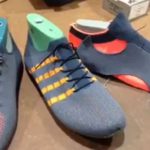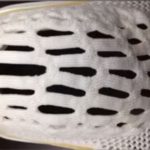Interview with Connie Huffa – FabDesign Company
By: Kohan Textile Journal
Since 1988, Fabdesigns has always been on the cutting edge of innovation, creating products, fabrics and components that change industries, and reduce waste. As the world changes, more of our talents and skills are brought to light. Fab designs’ scope is far beyond knitting and Stoll flat-knitting machinery.
Please let us know more details about Fab Design Company, history and success story.
We are teachers first, textile engineers, and artists, who see each project as a challenge and an opportunity to impact how people, companies, and individuals perceive and grow their own unique development processes and increase the value of their people, products, and company to not only their stakeholders but the consumers who purchase their products.
The well is deep here at Fabdesigns. We approach each process with an exit strategy in mind. With the ability to create exponential amounts of products, also comes the responsibility to assure that the products are made conscientiously, and with mindfulness to the consumers, the manufacturing workers, and to our planet.
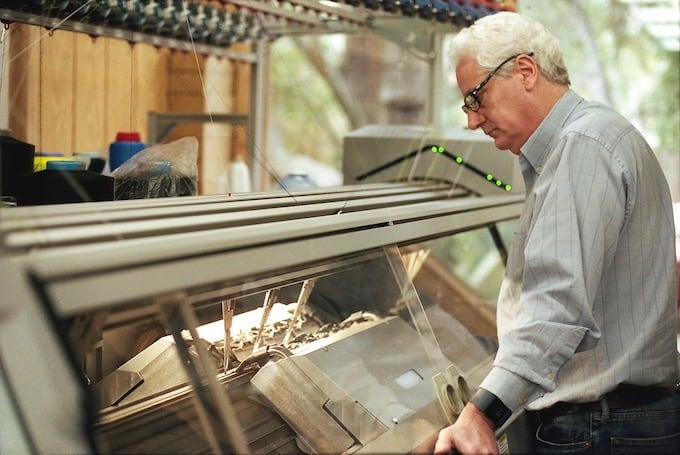
The key to our success has been aligning our network of thought leaders and like-minded colleagues around the world and channelling our Fabdesigns’ resources to focus on connecting the dots of a fractured industry, to build supply chains, and manufacturing platforms, for innovative companies who want to make products that make a positive impact on their markets, the planet and society.
We’ve built new technology over the last 7 years that are coming to market and will change how people see 3D knitting yet again.
The other issue that has emerged in the industry, is that most companies that build 3D knitting and technical textiles make their own product. Each machine is modified or tweaked for each project, depending on the performance characteristics of the materials as well as the product itself. I like to equate the knitting machine to a piano. There are 88 keys on the piano, yet there are so many variations, genres, and styles possible.
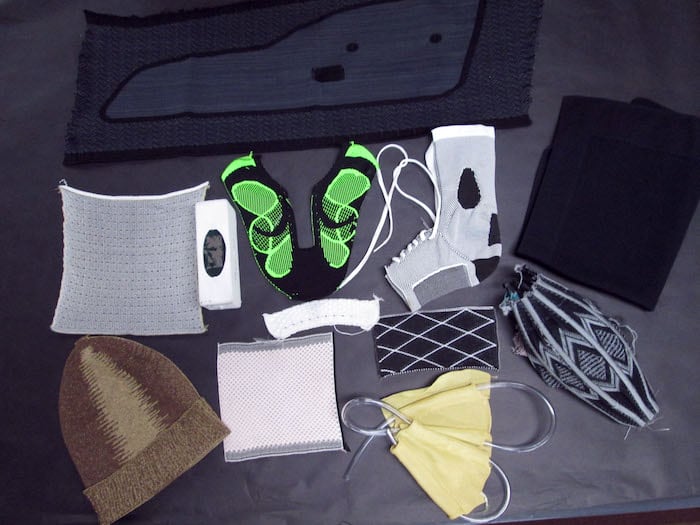
The same is true with 3D technical knitting. So, there is currently no factory on the planet that does private label knitting of 3D products for other companies because the machine specification is developed with the product itself over the course of the project’s evolution. So, to help our clients, we’ve been knitting small scale production in house for each client to prove their concepts and business plans.
It’s clear that there is a need in our industry for a reliable manufacturing facility that understands textile engineering, materials, design, and can not only develop technical products but also modify the machinery, programming, and build out manufacturing platforms and supply chains unique to each project. This is a monumental task in an industry where 98% of all machinery and people are focused on fast paced fashion and apparel development.

In the last decade, I believe we have done our best to move forward out of the quagmire of parasites that have shortsightedly usurped some of our intellectual property, while casting us aside, rather than working on a long-game of a continuous pipeline of many sustainably-minded products that are designed with exit strategies. The proof is that the world has seen nothing new in innovation in the field, except recolourations and cut and paste.
Today, Fabdesigns is focused solely on taking care of building our clients’ manufacturing platforms and supply chains; paying knowledge forward to those in need of sound advice; and we will continue pushing textile engineering, rebuilding the infrastructure of our industry, and driving technologies beyond basic apparel as we have for 32 years.
Nothing has changed with Fabdesigns, except the world has caught up with our philosophies, and the audience is a new generation of people who are demanding the same change we’ve been bringing for over 3 decades.
Share with us more about 3D design idea and applications in the knitting industry?
3D knitting is creating loops that interact with one another to create a fit on multiple planes. Each stitch has a purpose and a reason for being where it is. Fibres, yarns, and other materials can be integrated into one or more zones of a product or component to create specific performance characteristics required for each zone.
Comparing this to cut and sew, a person may be familiar with darts and gores. In 3D knitting, we close the darts by short rowing and creating wedges and other shapes in the knitting to fit the shape of the desired form, whether that be footwear, seating, limbs of the body, vehicle panels, or other shapes.

- 3D knitting is an additive manufacturing solution.
- Applications can be:
- rigid structures and composites panels
- footwear that mix thermoplastic materials for rigid zones and flax zones.
- Soft goods like yoga wear, socks, and apparel
- Smart textiles
- Upholstery for home, auto and aircraft
- Medical bracing and other products
- Implantable medical products
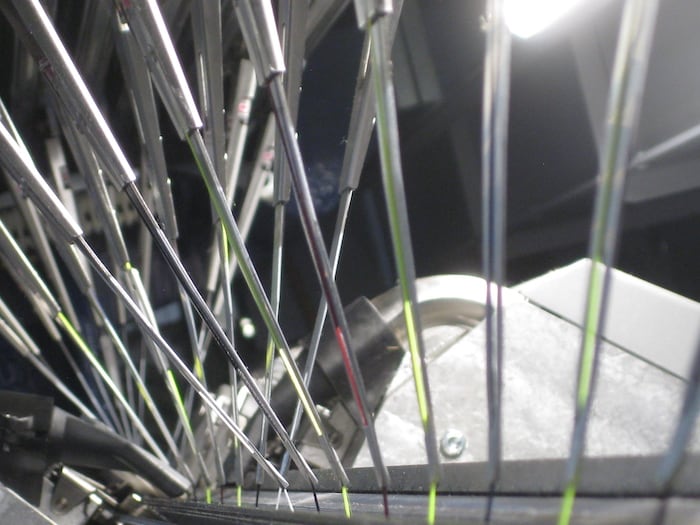
Could you please give us more information about knitted face mask designed and produced by your company? What is the specification, benefits and are they hygiene?
We developed our face masks independently and based on CDC and AFNOR specifications for adult sizing. All our masks are double-layered fabric per the official recommendations.
We have several types: athletic fit with nose wire, spacer fabric with nose wire, filter pocket mask without nose wire, and 3 color graphic art mask without nose wire. We used a lot of the performance yarns we use for activewear on the masks and the result has been comfortable, very durable, washable masks that are fun and that people don’t mind wearing.
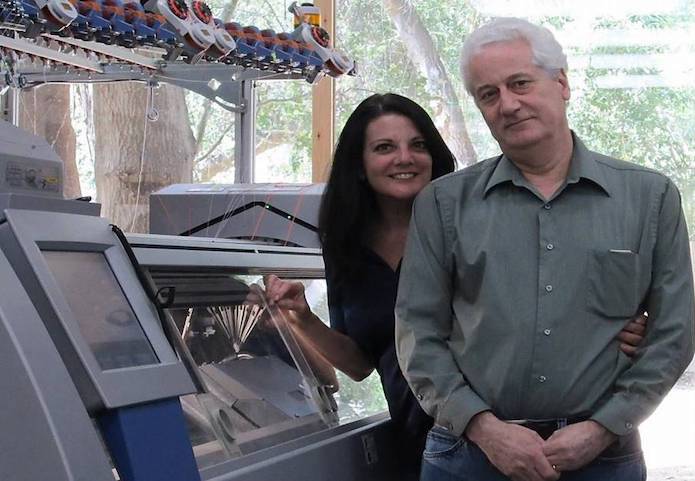
After making them for a couple weeks, we noticed people wanted different sizes to fit their faces and that the ‘official’ sizing was for about 80% of the population. So we make S/M, M/L, L/XL, and XXL all based on real fittings and customer help in building accurate sizes.
COVID 19 shows us we should rely more on sustainability and green products, how we can improve sustainability in fashion design and knitting industry?
What is so disturbing about the pandemic is how much trash it has generated in discarded PPE. Gloves and masks litter our streets and wash out to our rivers and oceans. What we’re putting into the trash is on everyone’s minds it seems. I think as retail disintegrates there is much more opportunity for small designers and individuals with great ideas to launch sustainable products on platforms like Shopify, Etsy, Amazon and other places.
Activist consumers are seeking out these products and will go the extra distance to find products that meet their needs for sustainable manufacturing, social equity, and transparent sourcing.
About Connie Huffa

Connie is part of the husband and wife team at Fabdesigns, Inc. that invented 3D knit running shoes for those guys in Oregon. Though, Fabdesigns doesn’t get the credit and has disputed the patents. She graduated with a BSc from Philadelphia College of Textiles and Science, where she also wrote and taught product development in the Masters of textiles program ’94, ’95, ’96. Connie has designed and engineered knits, wovens, and non-wovens for top apparel brands including PhillipsVanHeusen and Tricots St Raphael in NYC and their manufacturing facilities around the globe – as well as extreme aftermarket automotive brands for Shell Oil US in California.
If you’ve seen the Hawaiin seat covers, interior products, and dolphin air fresheners over the last 20 years, she is the point person resposible for bringing fashion to a dying industry through material science and innovative product development infrastructure, reviing the Shell aftermarket division from a waning $100 million business unit into a $450 million power house in less than 3 years and later Kraco Enterprises. She speaks marketing, design, risk analysis, operations, and EBITDA fluently.



